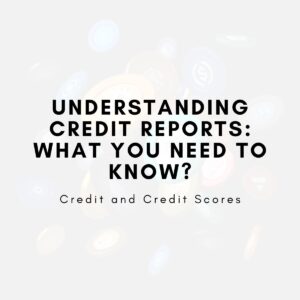
How to check your credit score for free?
Understanding your credit score is essential for managing your financial health, whether you’re applying for a loan, a credit card, or renting an apartment. In this guide, we’ll walk you through the best ways to check your credit score for free, the factors that influence it, and how to improve it.
Summary Table: How to Check Your Credit Score for Free?
| Section | Summary | Key Tips | Examples |
|---|---|---|---|
| Why Checking Your Credit Score is Important? | Checking your credit score is vital for monitoring your financial health, spotting fraud, and getting better loan terms. | – Regularly check your score. – Monitor for errors. – Understand how your score impacts loans and rates. | Rachel maintained a high score by paying bills on time, resulting in lower mortgage rates. Tom identified an error in his credit report via AnnualCreditReport.com. |
| How to Check Your Credit Score for Free? | You can check your credit score through websites, credit card providers, and AnnualCreditReport.com, all at no cost. | – Use AnnualCreditReport.com for one free report yearly. – Explore websites like Credit Karma for ongoing checks. | John checks his score via Capital One app monthly. Sarah caught a drop in her score on Credit Karma and resolved a missed payment. |
| What to Do If You Find Errors? | If you spot inaccuracies on your credit report, dispute them immediately to prevent damage to your score. | – File disputes directly with the credit bureau. – Follow up on disputes within 30 days. | Megan disputed a late payment error, and her score improved after corrections. Tom fixed an outdated debt entry, improving his credit score. |
| Tips to Improve Your Credit Score | Simple habits like paying bills on time, lowering credit utilization, and diversifying credit accounts can boost your score. | – Set automatic bill payments. – Aim for credit utilization below 30%. – Avoid applying for too much new credit. | Alex set up automatic payments, raising his score from 600 to 720. Jessica improved her score by reducing her credit card balances. |
This table summarizes the main points of the post, providing key tips and real-life examples to show how individuals have successfully applied these strategies to monitor and improve their credit score. Whether using free tools like Credit Karma or correcting errors on a credit report, the table presents actionable insights on managing your credit score.
Introduction
Your credit score is a critical part of your financial life. It affects your ability to get approved for loans, credit cards, mortgages, and even some jobs or rental agreements. A high score opens doors to better rates, while a low score can result in higher interest rates or denied applications.
Checking your credit score is the first step in understanding and improving it. Many people don’t realize that they can check their credit scores for free, and they may be surprised by the options available to them. This guide will provide a clear, step-by-step approach on how to check your credit score for free, along with tips on understanding the score and improving it.
Why Checking Your Credit Score is Important?
- Understand Your Financial Health: Your credit score gives you a snapshot of your financial behavior and responsibility. It reflects how well you handle debt and credit.
- Access Better Interest Rates: Lenders use your credit score to determine your loan terms. A higher score means better rates.
- Monitor for Fraud: Regularly checking your credit score can help you spot any suspicious activity or identity theft early.
Understanding What Affects Your Credit Score
Your credit score is calculated based on five key factors:
- Payment History (35%): Whether you’ve paid your bills on time.
- Credit Utilization (30%): How much of your available credit you’re using.
- Length of Credit History (15%): How long your credit accounts have been active.
- Types of Credit (10%): The mix of credit accounts you have (credit cards, loans, mortgages).
- New Credit (10%): The number of recent inquiries or new accounts.
Example: Rachel has had her credit card for 10 years, always paid her bills on time, and never used more than 30% of her credit limit. As a result, her credit score is consistently over 750, qualifying her for the best interest rates on loans and credit cards.
How to Check Your Credit Score for Free?
1. Visit AnnualCreditReport.com
The Annual Credit Report is the only federally authorized website that provides free access to your credit report from all three major credit bureaus: Equifax, Experian, and TransUnion. You’re entitled to one free report per year from each of the bureaus.
- Steps:
- Visit AnnualCreditReport.com.
- Complete a brief form to verify your identity.
- Select which bureau’s report you want to access.
- Review your credit report and make sure all information is accurate.
Example: Tom checked his credit report through AnnualCreditReport.com and found an error in his report related to a debt that had already been paid off. He promptly disputed the error, and it was corrected, preventing a decrease in his credit score.
2. Use Free Credit Score Websites
Several websites provide free access to your credit score and report, often from one or two bureaus. These sites offer additional tools and resources to monitor your credit and offer personalized advice.
- Popular Free Credit Score Websites:
- Credit Karma: Offers free credit scores from TransUnion and Equifax, along with credit monitoring tools.
- Credit Sesame: Provides free scores from Experian and credit monitoring.
- Mint: A budgeting app that provides access to your credit score for free.
Example: Sarah regularly uses Credit Karma to check her credit score. She noticed a significant drop after missing a payment on one of her credit cards and immediately contacted the issuer to resolve the issue before it got worse.
3. Check with Your Credit Card Issuer
Many credit card companies now offer free credit score tracking for their cardholders. This is a valuable tool, as it allows you to monitor your score regularly.
- Common Credit Card Issuers Providing Free Scores:
- Discover
- American Express
- Chase
- Capital One
Example: John, a Capital One cardholder, checks his FICO score directly through the Capital One mobile app every month. This helps him keep track of his credit score and avoid any unexpected declines when applying for new credit.
What to Do If You Find Errors in Your Credit Report?
When you check your credit score or report, you may find errors. It’s essential to address these mistakes immediately as they can hurt your credit score.
Steps to Dispute an Error
- Obtain a copy of your credit report.
- Identify the error: This could be a wrong account, an outdated debt, or a fraudulent inquiry.
- File a dispute: Use the dispute process on the credit bureau’s website or mail a dispute letter to the bureau directly.
- Follow up: The credit bureau has 30 days to investigate the dispute.
Example: Megan found an incorrect late payment listed on her credit report, even though she had paid on time. After disputing the error, the credit bureau corrected it, resulting in her score rising by 30 points within a few weeks.
Tips to Improve Your Credit Score
1. Pay Your Bills on Time
Late payments can severely damage your score. Set up reminders or automatic payments to ensure bills are paid promptly.
Example: Alex set up automatic payments for his credit card bills, ensuring they’re always paid on time. As a result, his credit score steadily improved from 600 to 720 in one year.
2. Lower Your Credit Utilization
Try to keep your credit utilization below 30%. This means if you have a credit limit of $10,000, try not to carry a balance higher than $3,000.
Example: Jessica was using 70% of her credit limit, which was hurting her credit score. After paying down her balances and keeping her utilization below 30%, her score increased by 40 points.
3. Avoid Opening Too Many New Accounts
Each time you apply for credit, it can cause a small dip in your credit score. Apply for credit only when necessary.
Example: Brian applied for multiple credit cards in a short span, and his score dropped because of the numerous hard inquiries. After waiting a year before applying for new credit, his score began to recover.
4. Diversify Your Credit Accounts
Having a mix of different types of credit accounts (e.g., credit cards, car loans, mortgages) can help improve your score.
Example: Caitlin had only a credit card for years, but when she took out a small personal loan to consolidate debt, it improved her credit score due to the increased credit mix.
5. Review Your Credit Regularly
Regularly checking your credit allows you to spot potential issues early and take corrective action.
Example: Raj checks his credit every three months using Credit Karma. When he noticed a sudden drop in his score, he immediately investigated, finding an error that was quickly rectified.
Conclusion
Checking your credit score regularly is one of the simplest and most effective ways to stay on top of your financial health. By using free services like AnnualCreditReport.com, Credit Karma, and Mint, you can access your credit score without any cost. Monitoring your score allows you to catch errors early, manage your finances better, and take steps to improve your credit when necessary.
Whether you’re planning to apply for a mortgage, car loan, or just want to stay informed, understanding your credit score can lead to better financial outcomes.
Key Takeaways
- AnnualCreditReport.com offers a free credit report from all three major bureaus once a year.
- Many free credit score websites like Credit Karma and Mint offer ongoing access to your score.
- If you find errors in your credit report, dispute them promptly to avoid negative impacts on your score.
- Regularly checking your credit score and following tips to improve it can result in lower interest rates and better loan terms.


